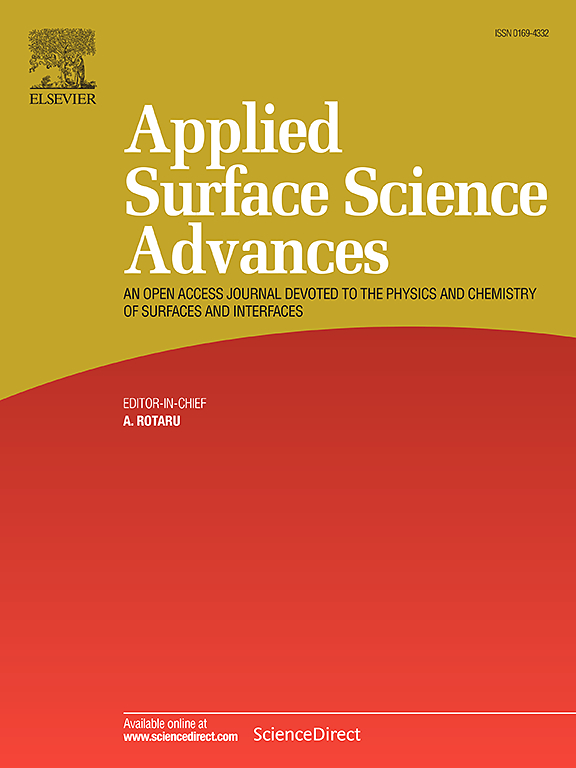Ti/TiOxNy thin films as highly efficient photoelectrode via engineered interfacial facet on plasmonic schottky barriers
IF 8.7
Q1 CHEMISTRY, PHYSICAL
引用次数: 0
Abstract
Titanium nitride (TiN) is recognized for enhancing semiconductor photocatalytic activity due to its plasmonic properties, similar to those of gold and silver nanoparticles. Changing the stoichiometry of TiN enhances free carrier density, resulting in metallic characteristics and optical properties resembling gold in the visible spectrum. New Ti/TiOxNy thin films were synthesized with the aid of the Arc-PVD technique under some conditions, including low temperatures and various concentrations of N2 gas. Under zero and maximum amounts of N2 gas, nonstoichiometric and highly conductive N-rich phases of TiN were created, respectively. A TiO2 semiconductor interlayer was specifically coated on a Ti substrate which served both as a co-catalyst layer and as a means to reduce residual stress in the TiN film. Our results demonstrate that the defects and resistance to oxidation in the TiN structure, dependent on the N2 input, may significantly influence the orientation of stable crystal facet ( [111]) and the excitation of plasmonic-photonic hybrid modes. The highest photocurrent was recorded at about 8.2 mA cm‒2 at 1.4 V vs. RHE for gold-colored Ti/TiOxNy oriented along [111] facet, which is 4.3 and 54.6 times more than samples adjusted along [110] and [001] facets, respectively. The employed PVD method at low temperatures as a strong designing technique for tailoring the metal-semiconductor interface simplifies the creation of highly activated photoelectrodes within the water-splitting performance. This applicable technique brings interesting eco-friendly benefits, including energy efficiency, low environmental footprint, and optimized material utilization, in accordance with green chemistry principles.
Ti/TiOxNy薄膜在等离子体肖特基势垒上作为高效光电极
氮化钛(TiN)由于其等离子体性质(类似于金和银纳米粒子)而被认为可以增强半导体光催化活性。改变TiN的化学计量增加了自由载流子密度,导致在可见光谱中具有类似金的金属特征和光学性质。在低温和不同浓度的N2气体条件下,利用电弧- pvd技术合成了新型Ti/TiOxNy薄膜。在氮气量为零和最大的条件下,TiN的非化学计量相和高导电性富n相分别被生成。在Ti衬底上专门涂覆了一层TiO2半导体中间层,该中间层既可以作为助催化剂层,又可以作为减少TiN薄膜中残余应力的手段。我们的研究结果表明,依赖于N2输入的TiN结构中的缺陷和抗氧化性可能会显著影响稳定晶面的取向([111])和等离子体-光子混合模式的激发。在1.4 V相对于RHE下,沿[111]面取向的金色Ti/TiOxNy的最高光电流约为8.2 mA cm-2,分别是沿[110]和[001]面取向的样品的4.3倍和54.6倍。低温下采用PVD方法作为一种强大的设计技术来定制金属-半导体界面,简化了在水分解性能下高活化光电极的创建。这项适用的技术带来了有趣的生态效益,包括能源效率、低环境足迹和优化材料利用,符合绿色化学原理。
本文章由计算机程序翻译,如有差异,请以英文原文为准。
求助全文
约1分钟内获得全文
求助全文

 求助内容:
求助内容: 应助结果提醒方式:
应助结果提醒方式:


